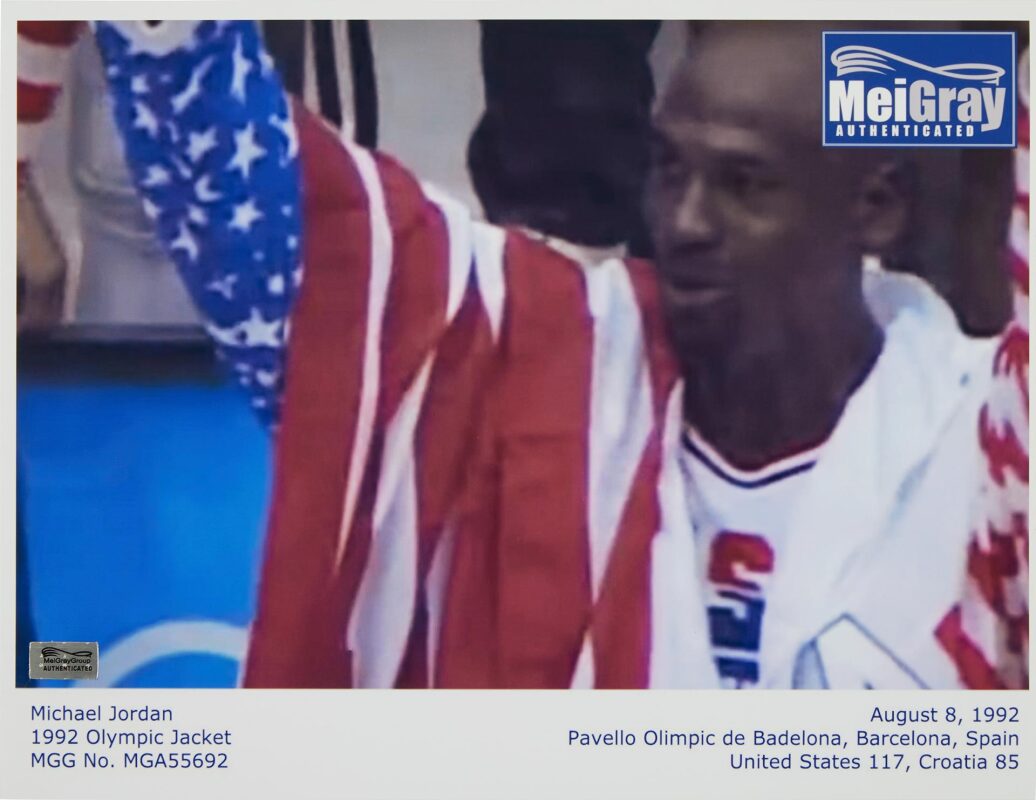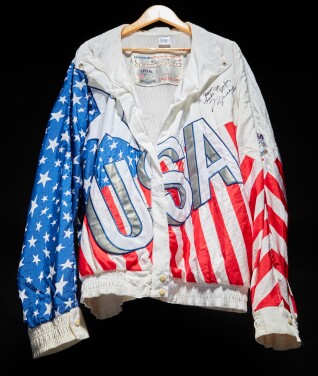M ichael Jordan has partnered with many companies throughout his years of fame, but the man described by the NBA itself as “the greatest basketball player of all time” is closely identified with one: Nike. The two have been bonded in marketing symbiosis for nearly four decades, with each bolstering the other’s success. Since signing Jordan, Nike has seen its market cap grow from around $300 million to more than $160 billion today. The deal has also made Jordan a billionaire; he made $256 million from his partnership in 2022 alone.
And perhaps no single item indicates the basketball legend’s appreciation for the company that made the third draft pick rich beyond the dreams of most humans than the jacket Jordan wore at the conclusion of the Dream Team’s remarkable dominance of the 1992 Olympic Games – a jacket currently on auction at Sotheby’s through 28 June.

Nike and Jordan’s relationship dates to 1984, when the NBA rookie signed with the Portland, Oregon-based shoe brand, riding his college success to an eye-popping (for the time) five-year, $2.5-million endorsement deal. (The deal was recently fictionalized in the film Air, starring Matt Damon and Ben Affleck.) Not only did this put Jordan in the shoes that would elevate him above his teammates and rivals during thousands of tongue-lolling dunks, it elevated Nike from primarily a purveyor of running shoes to a cultural force that became omnipresent in the worlds of style and athletics.
Come 1992, Jordan was riding high, at the peak of his powers as a player and a cultural influence as he and the rest of the Dream Team – the powerhouse array of NBA stars that the United States had tasked with taking the rest of the world to school at the summer Olympics in Barcelona – shocked and delighted audiences everywhere as they dominated the games. The team crushed all comers, winning every game by an average of 44 points and elevating the status of the sport around the world in the process.
Loyal Down to the Buzzer: Michael Jordan’s Olympic Gold Medal ‘Dream Team’ Jacket
When it came time for the medal ceremony, however, Jordan found himself in a predicament: With the cameras of the entire planet trained on him, the US Olympic Committee said he’d be forced to accept his gold medal while wearing a jacket emblazoned with the logo of Nike’s arch-competitor, Reebok, which had been battling with the Swoosh brand for athletic shoe supremacy for years.
“[They] said if we don’t wear our uniforms, we can’t accept our gold medal,” Jordan said at the time, as showcased in the ESPN documentary The Last Dance. He’d been told the US committee would find a way to disguise the logo, but Jordan – as type-A of a personality as they come – wasn’t going to leave it up to others.
“They can’t hide it like I’m gonna hide it. They in for a big fucking surprise,” he said.
And surprise them he did. To avoid being seen in the Reebok logo, Jordan pulled a page from many a politician and cloaked himself in the flag – literally. Jordan draped the stars and stripes over himself from front to back, covering up the icon of his sponsor’s rival. A set of safety pins provided an extra layer of obscurity.
After the medal ceremony, Jordan quickly doffed the jacket then handed it to Brian McIntyre, a member of the NBA’s public relations squad who was on hand to help the Dream Team. “He said, ‘I certainly don’t want it,’” McIntyre told the Associated Press.
McIntyre tried to return the jacket to Jordan two years later, but instead, the basketball legend – at the time in the midst of his short-lived transition to baseball – signed it with a personal note and gave it back. “To Brian, thanks for everything,” the note on the jacket’s left breast reads, followed by the most famous signature in the athletic world.






